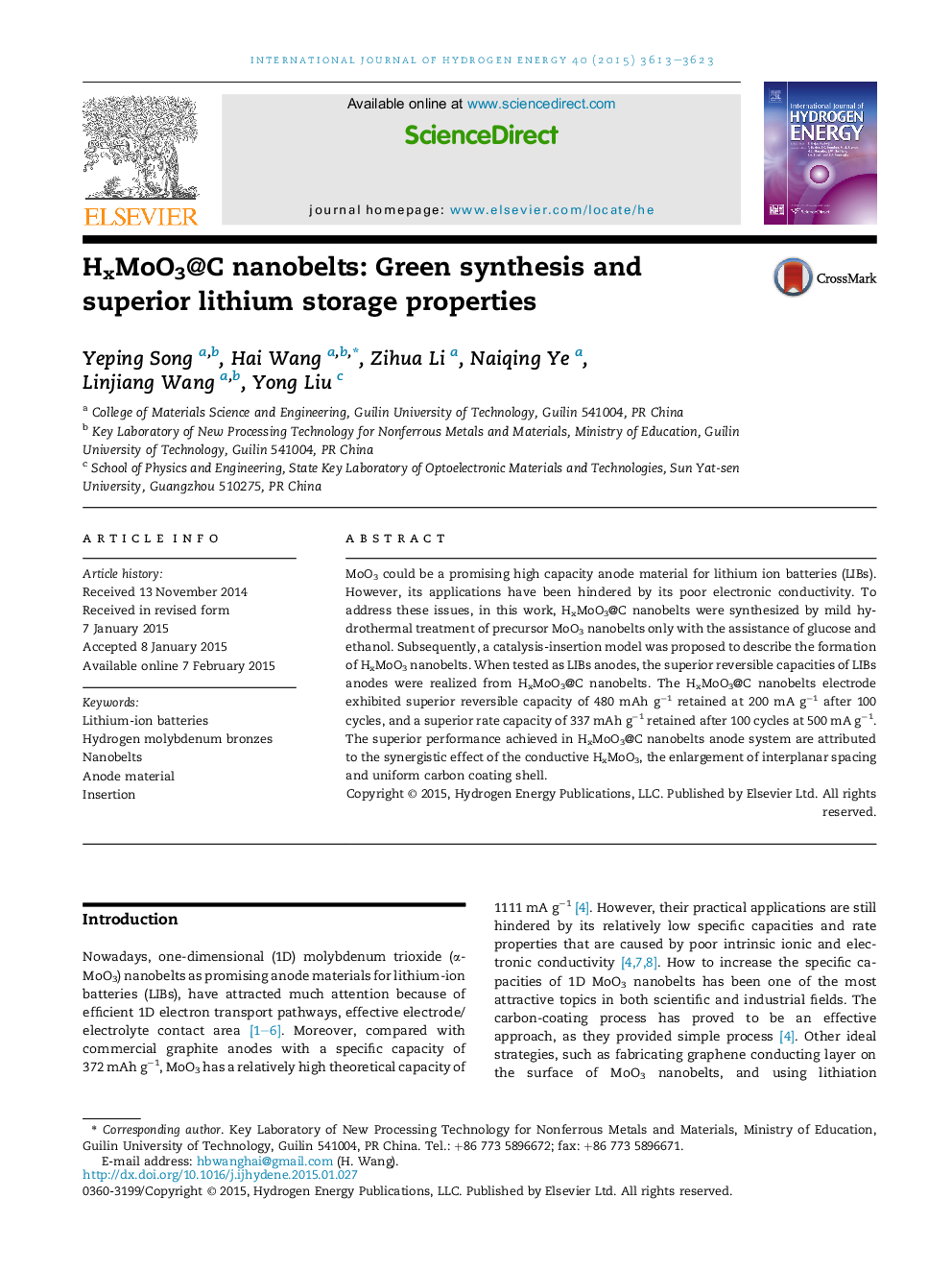| Article ID | Journal | Published Year | Pages | File Type |
|---|---|---|---|---|
| 1269790 | International Journal of Hydrogen Energy | 2015 | 11 Pages |
•The HxMoO3@C nanobelts are synthesized via green reduction-insertion method for the first time.•The electrochemical behavior of HxMoO3@C nanobelt is investigated.•Carbon coating and hydrogen insertion are achieved simultaneously.•The HxMoO3@C nanobelts anode material shows good electrochemical properties.
MoO3 could be a promising high capacity anode material for lithium ion batteries (LIBs). However, its applications have been hindered by its poor electronic conductivity. To address these issues, in this work, HxMoO3@C nanobelts were synthesized by mild hydrothermal treatment of precursor MoO3 nanobelts only with the assistance of glucose and ethanol. Subsequently, a catalysis-insertion model was proposed to describe the formation of HxMoO3 nanobelts. When tested as LIBs anodes, the superior reversible capacities of LIBs anodes were realized from HxMoO3@C nanobelts. The HxMoO3@C nanobelts electrode exhibited superior reversible capacity of 480 mAh g−1 retained at 200 mA g−1 after 100 cycles, and a superior rate capacity of 337 mAh g−1 retained after 100 cycles at 500 mA g−1. The superior performance achieved in HxMoO3@C nanobelts anode system are attributed to the synergistic effect of the conductive HxMoO3, the enlargement of interplanar spacing and uniform carbon coating shell.
Graphical abstractFigure optionsDownload full-size imageDownload as PowerPoint slide
